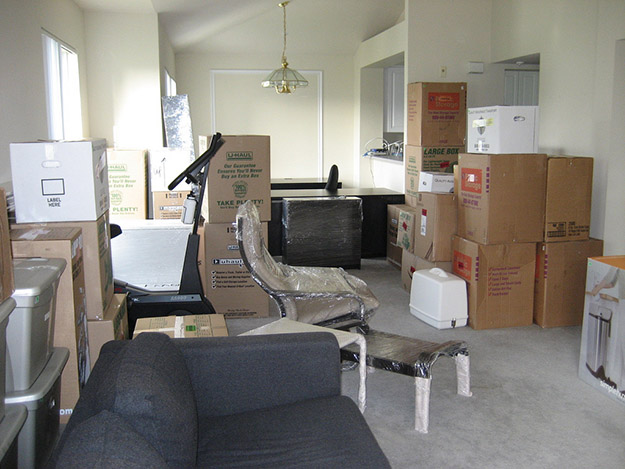HOW TO PACK A LIVING ROOM
Transporting the big, valuable items in the living room from one home to another should concern anyone who is going through the moving process. All the time, home electronics like TVs, stereos, entertainment centers, and DVD players are damaged during the moving process. Using proper procedures while you pack can help save a truckload of headaches. Using our team’s own expertise, we came up with this guide to helping you pack important items in your living room.

HOW TO PACK A FLAT SCREEN TV
Before you move a flat screen tv, you should make sure to disconnect any and all wires connected to the TV that can be put back. You want to separate the TV from external components during the packing process as much as possible. If you’ve kept your TV’s box around, use it to pack up your TV so it can leave your home the same way it came in. Pack everything else related to the TV another box, but make sure to label the box clearly so you know it has all the TV stuff inside. You’ll want to set up cable once you get to your new home, so make sure your cable box and TV remote are in a clearly labeled box.
Don’t pack anything in front of the screen that isn’t meant to protect the TV – the screen is the most fragile part of the television and in-move fluctuation of items could cause damage to the screen. Just a little scratch can be a huge problem for the viewing experience. TVs are susceptible to damage all around, so make sure to place buffers at all angles. Movers can use blankets or bubble wrap to secure the TVs in the boxes. To make sure you are secure, have 2 people carry the TV box – 2 people should definitely work on any TVs that are mounted to a wall, especially. With all these precautions you should be able to prevent any turmoil with your TV.
PACKING OTHER ELECTRONICS
Like with TVs, you want to keep in mind the parts of electronics most susceptible to being damaged. With Stereos, the speakers can be punctured, thus they should be packed around the sides of the boxes. A common moving truism (also commonly used by grocers) is that the heaviest items should go at the bottom. Utilize this rule after you apply padding to the bottom of your box. Pad your items all around with blankets or bubble wrap. Another general rule of moving; you want to remove as many accessory items from your larger items as possible. In the case of DVD players, you definitely will want to remove the DVDs from inside the players. While moving, the discs can shift and lodge somewhere you won’t want them. Best to just avoid any potential issues.
PACKING AN ENTERTAINMENT CENTER
Entertainment centers, furniture consoles where people but their TV and other electronic devices are often stored. These huge consoles can be really tricky to move if you don’t take on the task strategically. First, you should separate the console into its individual components whenever possible. This includes emptying the console of any items stored inside, including DVDs, CDs, etc. which should then be individually packed. After the console is disassembled to few enough parts that it is possible to move, make sure to pack together all hardware (screws and other small parts) together in a clearly marked bag. Losing these small parts is as easy as it is devastating.

PACKING OTHER ITEMS
Living rooms don’t just have tricky-to-pack electronics. Here’s some quick tips for the other items in that room:
GLASS SIDE TABLE:
Glass side tables can be packed in a china box, if the table is small enough. If the glass is too large to fit in a china box, you can pack the glass separately.
COFFEE TABLE:
Not unlike many other items, coffee tables often have tons of items packed inside their interior compartments. But these compartments are so easily forgotten. Make sure you don’t forget.
LAMPS:
Before moving your lamps, take the shade off from their base to pack each component individually in a box where they will be best suited.
RUG:
Vacuum your rug before you move, so it shows up to your new home clean and you don’t bring any old dirt with you. This is your second chance with this rug, make it worthwhile! You should keep the underliner with the rug and get a new padding if you have had the rug for a while (start fresh!).


